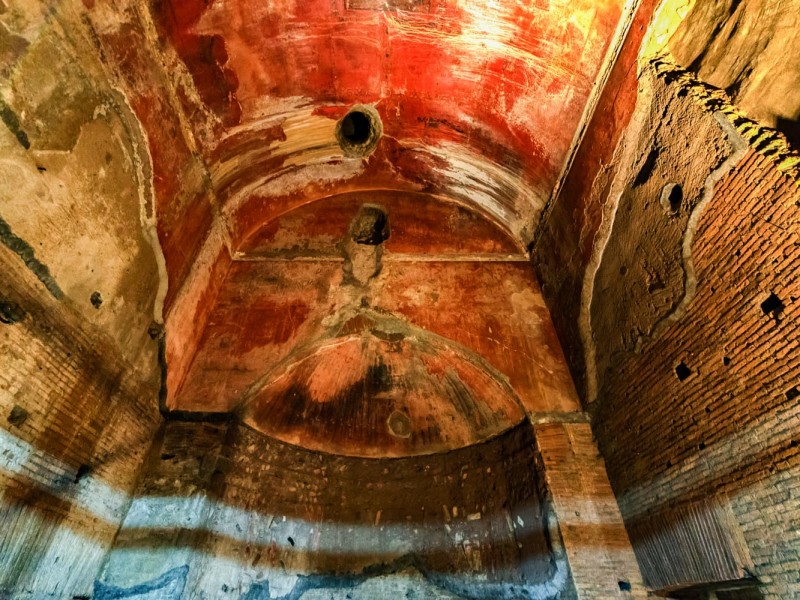
The remnants of what is believed to be the revolving dining room was discovered in 2009. Rotating Dining Room: Historians wrote that the continually rotating dining room ceiling was painted to emulate the heavens above.And it was built decades before the Pantheon. This dramatic room features an alcove on each of its eight sides that offered a view in all directions. Octagonal Room: This domed room with oculus is believed to be the first octagonal room in history, an architectural innovation with a sculptural sensibility and deliberately conceived lighting.The myriad thematic rooms contained innovative features such as a revolving dining room, dramatic water features, and new architectural inventions. The Domus Aurea as Architectural MasterpieceĪn extravagant and expansive Domus Aurea is believed to have been conceived purely for entertainment. Renaissance artists were fascinated by the discovery, and the likes of Raphael and Michelangelo rappelled into the underground cave to get a closer look. The frescos found (referred to as grottesche – the derivation of grotesque) had been preserved by encasement, protecting the artwork from destructive humidity. It appeared to be a cave – in Italian, a grotta. The Domus Aurea remained hidden for centuries until, by happenstance, a young man in the 15th century fell through a crevice and landed in the midst of it. That which remains is proof of the enormous influence the Domus Aurea had on future architecture. Most of Nero’s Golden House still lies beneath major monuments, serving as their foundations. Only about a tenth of the Domus Aurea’s original 300 rooms are tourable today. This catastrophe allowed a bigger and better Rome to emerge – including the Domus Aurea. Nevertheless, ten of Rome’s 14 neighborhoods, approximately 2/3 of the center of Rome, were wiped out in the fire. Some historians blamed Nero for starting the fire as a means of getting his way to rebuild a more modern, extravagant Rome, which the Senate had previously denied.

The eccentric emperor Nero began to build the Domus Aurea in the wake of the great Rome fire of 64 AD. But on my recent trip to Rome, I was thrilled to find the Domus Aurea open once again. In subsequent trips, I had wanted to share this stunning place with friends and family, only to find that the Domus Aurea has been mostly closed to visitors over the past decade. I took for granted that it would always be accessible like any other ancient tourist sight in Rome.

I didn’t realize then just how lucky I was to be seeing this magnificent Roman monument.

Also referred to as Nero’s Golden House for its once abundant gold leaf, I was awestruck by this ancient architectural masterpiece. When Nero inaugurated the house at the end of the works, he showed himself satisfied and said "Finally I begin to live in a house worthy of a man." (Svetonius).I first descended into Nero’s underground world of the Domus Aurea on my first trip to Rome in 2002. The baths were supplied with both sea water and sulfurous spa water. The main banquet hall was circular and constantly revolved day and night, like the heavens. The dining-rooms had fretted ceilings made of ivory, with panels that turned and shed flowers and perfumes on those below. In the rest of the house everything was coated with gold and adorned with gems and shells. There was a lake too, in fact, a sea, surrounded with buildings as big as cities.īehind it were villas with fields, vineyards and pastures, woods filled with all kinds of wild and domestic animals. The vestibule of the house was so big it contained a colossal statue 120 feet high, the image of Nero and it was so extensive that it had three colonnades a mile long. Learn the history of what must have been one of the most aesthetically overwhelming buildings ever created, once home to luxuries like mosaics, marble furnishings and even a rotating dining room! Enter the Domus Aurea or Golden House, designed purely for pleasure by Emperor Nero, a man famous for jaw-dropping acts of self-indulgence.


 0 kommentar(er)
0 kommentar(er)
